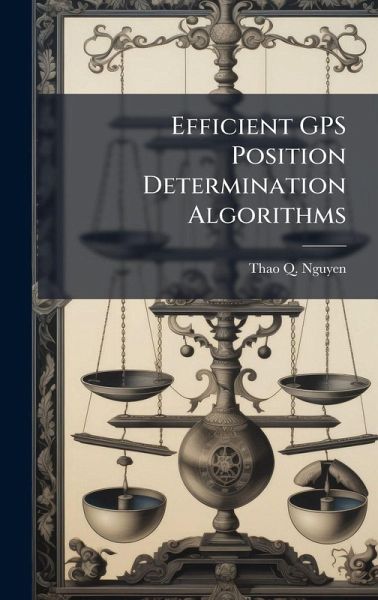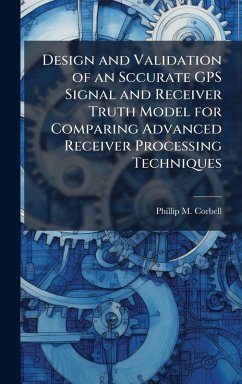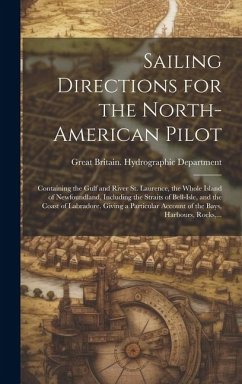
Efficient GPS Position Determination Algorithms
Versandkostenfrei!
Versandfertig in über 4 Wochen
28,99 €
inkl. MwSt.
Weitere Ausgaben:

PAYBACK Punkte
14 °P sammeln!
This research is aimed at improving the state of the art of GPS algorithms, namely, the development of a closed-form positioning algorithm for a stand-alone user and the development of a novel differential GPS algorithm for a network of users. The stand-alone user GPS algorithm is a direct, closed-form, and efficient new position determination algorithm that exploits the closed-form solution of the GPS trilateration equations and works in the presence of pseudorange measurement noise for an arbitrary number of satellites in view. A two-step GPS position determination algorithm is derived which...
This research is aimed at improving the state of the art of GPS algorithms, namely, the development of a closed-form positioning algorithm for a stand-alone user and the development of a novel differential GPS algorithm for a network of users. The stand-alone user GPS algorithm is a direct, closed-form, and efficient new position determination algorithm that exploits the closed-form solution of the GPS trilateration equations and works in the presence of pseudorange measurement noise for an arbitrary number of satellites in view. A two-step GPS position determination algorithm is derived which entails the solution of a linear regression and updates the solution based on one nonlinear measurement equation. In this algorithm, only two or three iterations are required as opposed to five iterations that are normally required in the standard Iterative Least Squares (ILS) algorithm currently used. The mathematically derived stochastic model-based solution algorithm for the GPS pseudorange equations is also assessed and compared to the conventional ILS algorithm. Good estimation performance is achieved, even under high Geometric Dilution of Precision (GDOP) conditions. The novel differential GPS algorithm for a network of users that has been developed in this research uses a Kinematic Differential Global Positioning System (KDGPS) approach. A network of mobile receivers is considered, one of which will be designated the 'reference station' which will have known position and velocity information at the beginning of the time interval being examined. The measurement situation on hand is properly modeled, and a centralized estimation algorithm processing several epochs of data is developed. This work has been selected by scholars as being culturally important, and is part of the knowledge base of civilization as we know it. This work was reproduced from the original artifact, and remains as true to the original work as possible. Therefore, you will see the original copyright references, library stamps (as most of these works have been housed in our most important libraries around the world), and other notations in the work. This work is in the public domain in the United States of America, and possibly other nations. Within the United States, you may freely copy and distribute this work, as no entity (individual or corporate) has a copyright on the body of the work. As a reproduction of a historical artifact, this work may contain missing or blurred pages, poor pictures, errant marks, etc. Scholars believe, and we concur, that this work is important enough to be preserved, reproduced, and made generally available to the public. We appreciate your support of the preservation process, and thank you for being an important part of keeping this knowledge alive and relevant.












